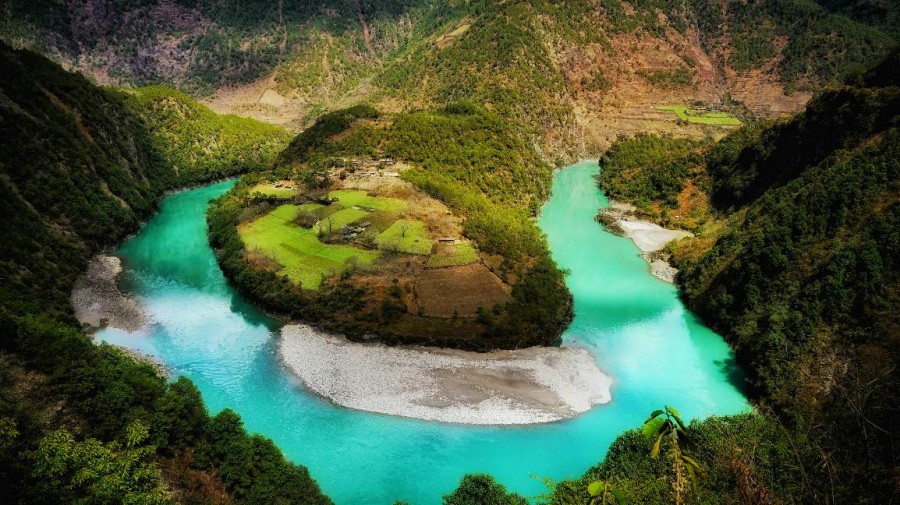
Three Parallel Rivers of Yunnan Protected Areas
Selected nature reserves and places of scenic beauty in this unique region were collectively awarded World Heritage Site status in 2003 for their very rich biodiversity and outstanding topographical diversity.
Type: Physical and Geographical Landscape, River World Natural Heritage in National Park Nature Reserve
Chinese Name: 云南三江并流
Opening Hours: Open all day
Admission Ticket: No tickets are required
Recommended Travel Time: 1 hour
Location: Within the territory of Diqing Tibetan Autonomous Prefecture and Nujiang Susu Autonomous Prefecture and along the Jinsha River in Lijiang Naxi Autonomous County(迪庆藏族自治州及怒江僳僳族自治州境内境内及丽江纳西族自治县沿金沙江部分)
Three Parallel Rivers of Yunnan Protected Areas
The Three Parallel Rivers of Yunnan Protected Areas is a UNESCO World Heritage Site in Yunnan province, China. It lies within the drainage basins of the upper reaches of the Yangtze (Jinsha), Lancang (Mekong) and Nujiang (Salween) rivers, in the Yunnan section of the Hengduan Mountains. The protected areas extend over 15 core areas, totalling 939,441.4 ha, and buffer areas, totalling 758,977.8 ha across a region of 180 km by 310 km.
Why is Three Parallel Rivers of Yunnan Protected Areas So Special?
After this area of near confluence, the rivers greatly diverge: the Nujiang River becomes Salween and empties out at Moulmein, Burma, into the Indian Ocean, the Lancang becomes the Mekong and south of Ho Chi Minh City, Vietnam, empties out into the South China Sea and the Yangtze flows into the East China Sea at Shanghai. Selected nature reserves and places of scenic beauty in this unique region were collectively awarded World Heritage Site status in 2003 for their very rich biodiversity and outstanding topographical diversity.
Culture of Three Parallel Rivers of Yunnan Protected Areas
Although this region has been acknowledged as a natural World Heritage Site, its demographic make-up also is highly interesting as it contains many of the twenty-five minorities found in Yunnan province including the Derung, the smallest of all of China’s minority groups. Some of the other minorities found in this region are the Tibetan people, the Nu people, Lisu, Bai, Pumi and Naxi. Many of these minorities still use traditional costumes as their normal daily attire. In the same region as the Three Parallel Rivers of Yunnan Protected Areas lies the Old Town of Lijiang, which is also a World Heritage Site in its own right.

How to Get to Three Parallel Rivers of Yunnan Protected Areas?
Travel with China Dragon Tours (top recommended)
If you want to get rid of hustle of transportation and troublesome navigation, you can book a private tour package which covers visiting, dining and transfer from us. Our local tour guide and driver will escort you to Three Parallel Rivers of Yunnan Protected Areas with speed and convenience, and take care of all the details. You just need to focus on travel.
Independent Travel
You need to get to Liuku in Nujiang Lisu Autonomous Prefecture first, and then they can take bus from there to Fugong, Gongshan and Bingzhongluo Village. This itinerary gives visitors a chance to explore the Nu River Gorge.
Recommended Yunnan Tour Packages
- 9 Days Best Yunnan Minorities Discovery
- 9 Days Best Yunnan Tour with Tiger Leaping Gorge Hiking
- 9 Days Yunnan-Guizhou Winter Birding Tour
- 14 Days West Yunnan Birding Tour with Gaoli Gongshan Mountain
- 25 Days West Yunnan Panorama Birding Tour
- 9 Days Yunnan Muslim Tour to Kunming, Dali, Lijiang and Shangri-La
- 8 Days China and Vietnam Overland Group Tour along Yunnan-Vietnam Railway
- 4 Days Yunnan Jingpo Ethnic Minority’s Munao Zongge Festival Tour
Nearby Attractions
- Erhai Lake in Dali
- Gonggeer Grassland in Chifeng
- Enshi Grand Canyon
- Yunnan Ethnic Villages in Kunming
- China Traditional Villages in Qujing City, Yunnan
- China Traditional Villages in Wenshan Prefecture, Yunnan
- China Traditional Villages in XishuangBanna Prefecture, Yunnan
- China Traditional Villages in Yuxi City, Yunnan














